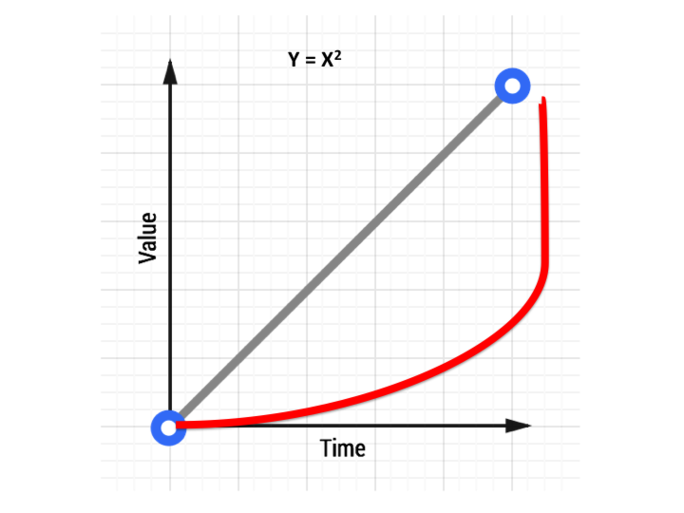
One of the presentations at #TheDestinationExperience was fromMichael Lee-Chin, Chairman of Jamaica’s Economic Growth Council, who had us from the start with his use of a white board and a math equation to illustrate a concern about young professionals:
Y = X
Chin’s theory is that most millennials think that their careers will progress along a line that is represented by Y=X. Here is what that graph would look like:

The Y-axis represents value (or success) and the X-axis represents time. Most of these young professionals expect that an increase in the time spent on an endeavor means their success would rise equally.
If only it were that easy!
Mr. Chin pointed out that careers rarely proceed in this linear fashion. In fact, it would be more appropriate to plot career advancement using the following math formula:
Y = X2
For the non-math majors, this is how it will look if it was plotted out:

(Before I receive any complaints from the mathematical geniuses, please note that this graph is over exaggerated for the purposes of my point). But using this math formula, it can be seen that a significant amount of time is spent with relatively little results to show for it. This can be referred to as “paying your dues” or just working very hard until you are “discovered.”
My experience says that the Y = X2 formula is how the real world works.
How does this relate to millennials? Well, millennials are branded as quick to jump from job to job. This is due to an expection that success comes in proportion to their time spent. The reality, however, is that it will take much longer to realize the level of success they seek, then there is a disappointment waiting to happen. Just take a look at this graph:

Under the Y = X2 formula, after a couple of years, millennials feel they should have already moved up in an organization. Their frustration may focus on the problems with the company or career choice and decide that they are not making progress in the company.
As a result, they quit and move on. The problem is that in most cases, that means starting from scratch. They work for years at a new job and career and don’t see the linear progression they expect and jump again. This creates a maddeningly recurring cycle of never really getting to achieve their goals.
There are millions of young professionals that are on this path. The key is to have indicators that will help you determine whether you are on the wrong track. Only if these indicators would portend that you are truly going down a dead-end should you consider abandoning all of the hard work and time you have put in on a career. This holds true for people, companies and even processes.
In my book Grounded, I talk about the Lack of Perseverance as one of the three Grounded By anchors we must overcome to achieve the maximum success we are capable of.
If you are convinced that you live in a Y=X world, I challenge you to look around you and see if you can find actual examples of where this is occurring with your peers. If you can’t find many examples of it being true, then consider that Y = X2 is likely true. And if it is, how will you adjust your work ethic, your attitude to achieve the success you seek?
David is an international speaker, executive coach, serial entrepreneur, and shipwreck survivor. He is the bestselling author of Grounded (Little River, 2016) . If you’re interested in David’s expertise in the areas of leadership, finance, and public speaking, please get in touch here.